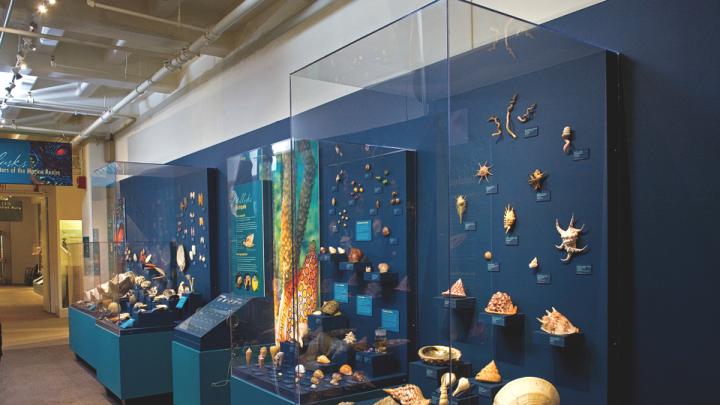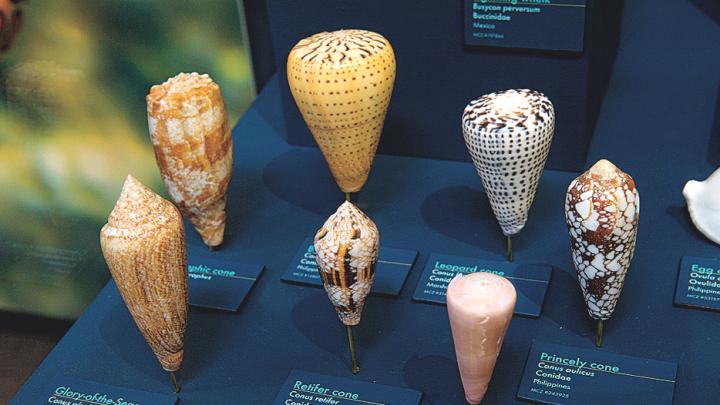As you stroll along a summer beach, you may be on the lookout for shells, among other sights. Many are beautiful, or intriguing, or associated with pearls or Tyrian purple dye, and the clam, scallop, and oyster shells on a Cape Cod beach may remind you of delectables to eat. You may pick up and pocket that pretty jingle (Anomia simplex); collecting shells can be a harmless passion. But if you grab for a certain cone shell on an Australian beach, and the snail who made it is still in residence, you could be dead by sundown.
An exhibition titled Mollusks: Shelled Masters of the Marine Realm, on display at the Harvard Museum of Natural History through February 2014, might keep you out of danger. With about 300 specimens from the more than 10 million in the museum, the show explores the amazing diversity of the collection and of snails, clams, squids, octopuses, and other invertebrates that together comprise almost a quarter of all known marine species.
A display case devoted to snails contains two shells of the same species of Indian sacred chank (Turbinella pyrum). One is coiled with an opening to the right, the usual thing; the other has its opening to the left. There are only three known examples of such a left-facing shell in the United States. Curatorial associate in the malacology department Adam Baldinger, who selected much of what is on display, feels that the opportunity to include this rarity, a recent donation, is fantastic. A local amateur shell collector has observed that the shell is so valuable in the marketplace that armed guards should be positioned on either side of the case 24/7.
Also in the case are seven shells of cone snails (inset). Remains of the three deadliest specimens are shown elsewhere, but all cone snails have toxin. These animals make their living by firing darts laced with stunning or paralyzing toxins at prey, and this procedure has led scientists to new tools to alleviate pain in humans. “When we injure ourselves and take morphine, or even Tylenol,” says Baldinger, “we’re blocking the nerve impulses to the part of the body that’s damaged, to prevent pain.” A powerful, nonaddictive, well-behaved painkiller derived from cone-snail toxin has been approved by the Federal Drug Administration, and more such will surely follow. Many species of cone snails exist and produce a vast range of potentially helpful toxins. But cone snails live on coral reefs, which are being destroyed. This is an argument in favor of quickly picking up cone snails, carefully.









